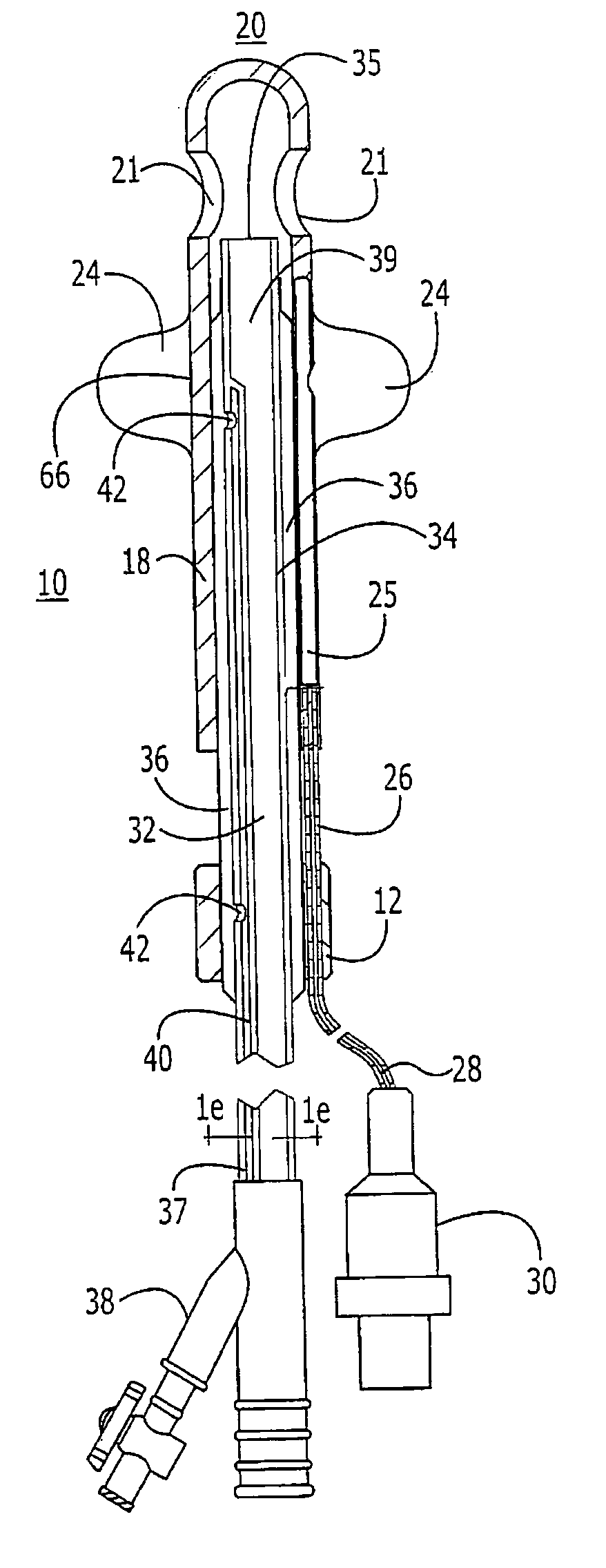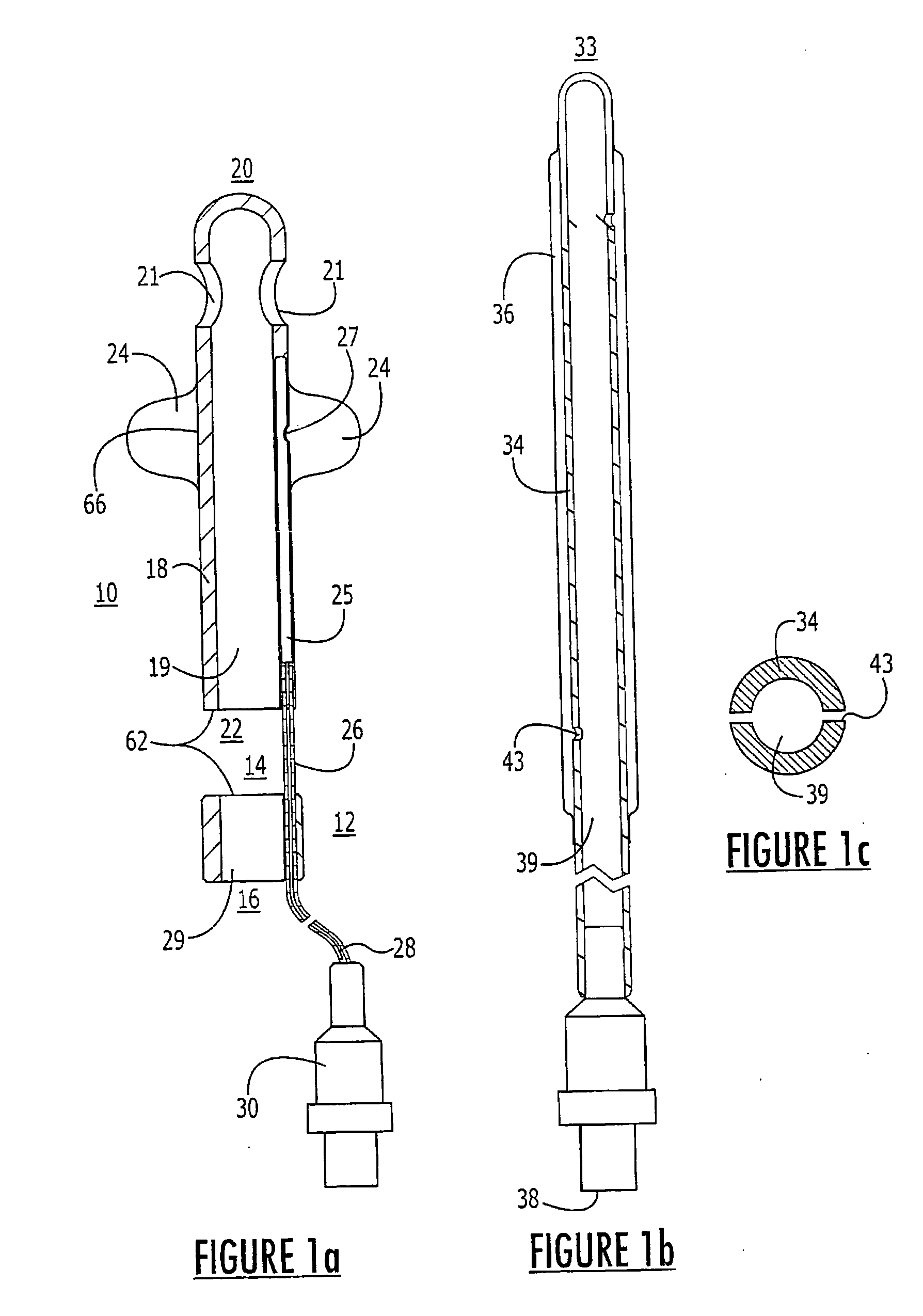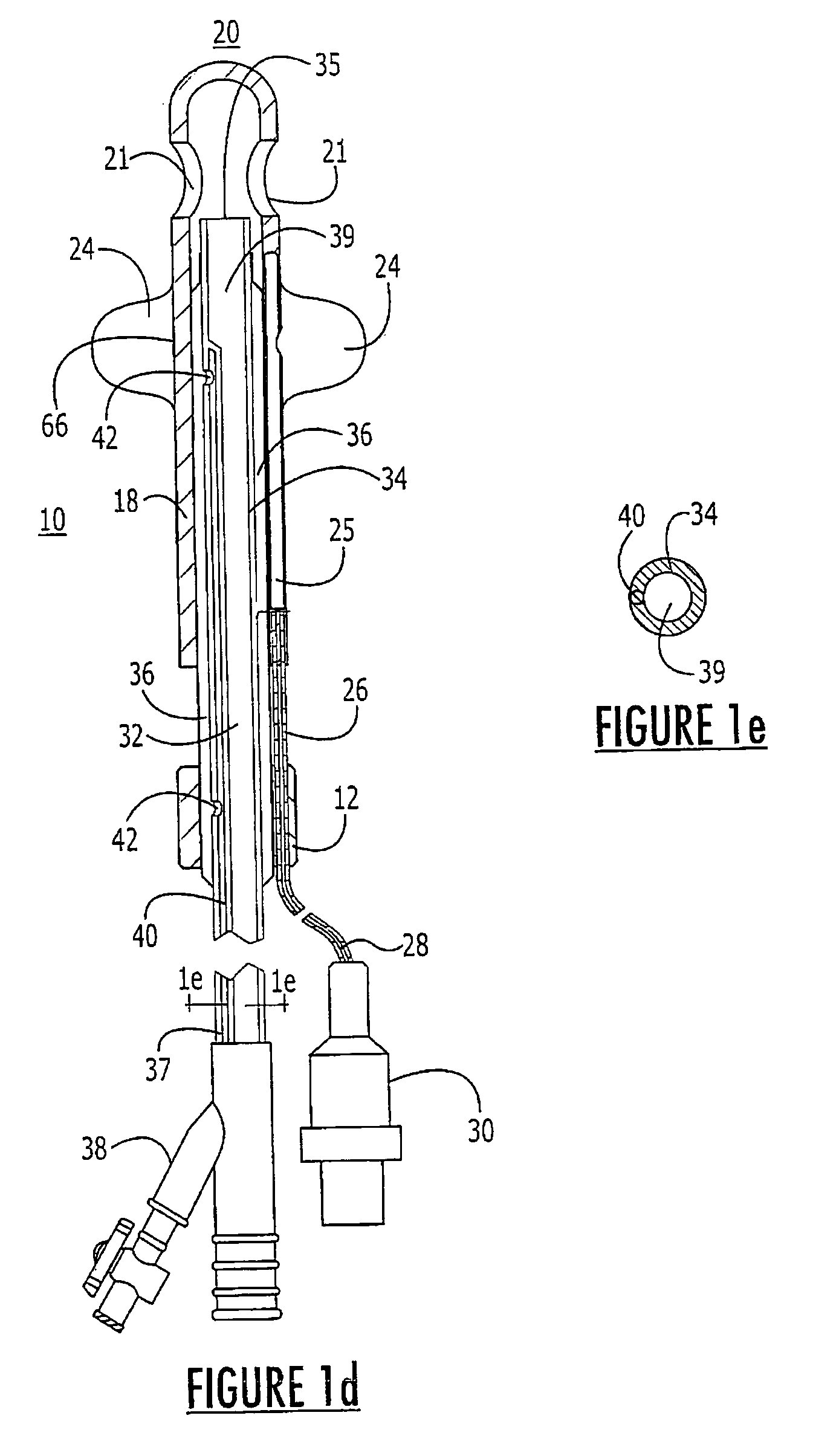Urethral catheter and guide
a urethral catheter and catheter technology, applied in the field of urethral catheters and guides, can solve the problems of catheters, high catheter weight, and two major limitations, and achieve the effects of reducing the number of catheters, and avoiding the formation of urethral urethra
- Summary
- Abstract
- Description
- Claims
- Application Information
AI Technical Summary
Benefits of technology
Problems solved by technology
Method used
Image
Examples
Embodiment Construction
[0060] The present invention is of an indwelling urethral catheter which can be used for urinating a patient after a surgical procedure such as TURP or a non-surgical procedure such as thermal ablation of the prostatic urethra. Specifically the catheter of the present invention can be used for both thermal ablation and subsequent urination of the patient. The present invention is further of a catheter guiding element and catheter insertion and positioning methods to be used along with the catheter of the present invention.
[0061] The principles and operation of an indwelling urethral catheter, guiding element and methods according to the present invention may be better understood with reference to the drawings and accompanying descriptions.
[0062] Before explaining at least one embodiment of the invention in detail, it is to be understood that the invention is not limited in its application to the details of construction and the arrangement of the components set forth in the followi...
PUM
 Login to View More
Login to View More Abstract
Description
Claims
Application Information
 Login to View More
Login to View More - R&D
- Intellectual Property
- Life Sciences
- Materials
- Tech Scout
- Unparalleled Data Quality
- Higher Quality Content
- 60% Fewer Hallucinations
Browse by: Latest US Patents, China's latest patents, Technical Efficacy Thesaurus, Application Domain, Technology Topic, Popular Technical Reports.
© 2025 PatSnap. All rights reserved.Legal|Privacy policy|Modern Slavery Act Transparency Statement|Sitemap|About US| Contact US: help@patsnap.com



